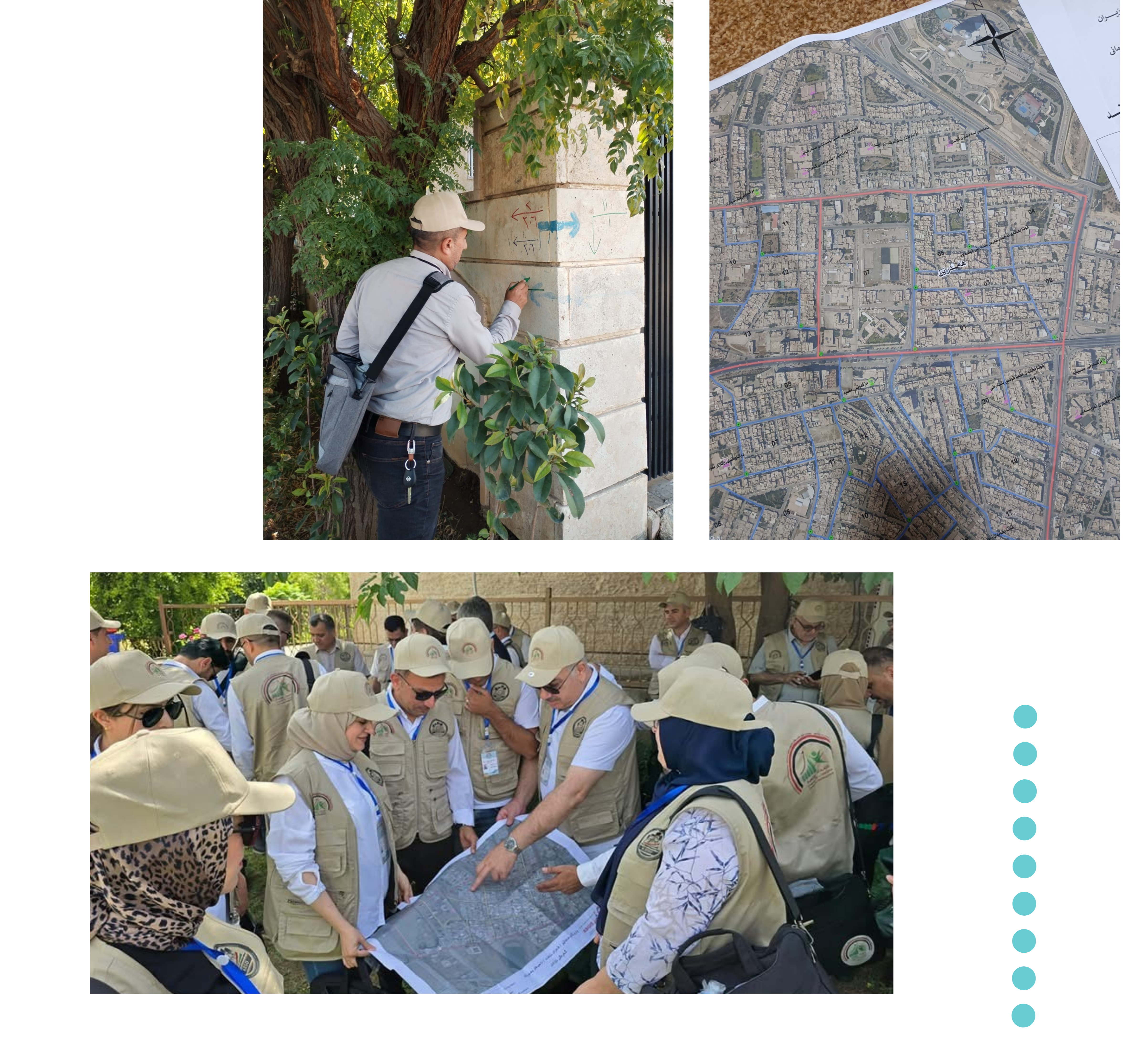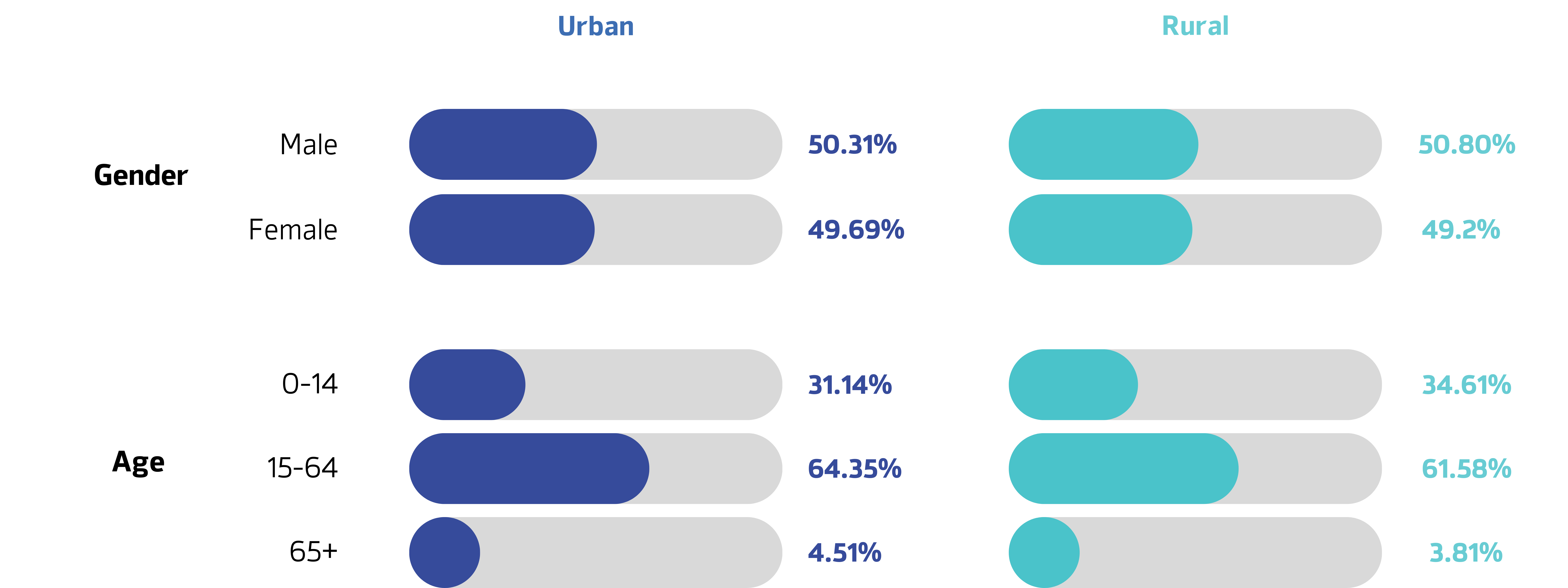Iraq
Including refugees, IDPs, and statelessness in the Population and Housing Census
Background
Iraq has experienced multiple waves of forced displacement through its history, driven by conflict, political instability, and economic crises. The Iran-Iraq War (1980–1988), the Gulf War (1990–1991), and the Iraq War (2003-2011) triggered mass movements within and beyond borders, leaving a long-lasting impact on the population. More recently, the rise of the Islamic State of Iraq and Syria (ISIS), between 2014 and 2017, and the outbreak of the Syrian civil war in 2011 contributed to an increased numbers of both internally displaced persons and refugees.
The Kurdistan Region of Iraq (KRI), which holds a unique semi-autonomous status with the Kurdistan Region Government (KRG) as its legislative authority, hosts most of the country’s displaced persons. This population is estimated to be over 327,000 refugees and asylum-seekers and over one million IDPs. [1]
Decades of political disruption and war also hampered the country’s statistical development efforts, including its ability to conduct a full and trusted national census. Years of negotiations led to a long-awaited, comprehensive national census being conducted in November 2024. Iraq’s Authority of Statistics and Geographical Information System (ASGIS) led the process, with cooperation from the Kurdistan Region Statistics Office (KRSO).

Overcoming challenges in the planning
The last national census took place in 1987, although results are not trusted by all communities in Iraq. A following iteration happened in 1997 but did not include KRI so, for many years, the 1957 census — conducted during the monarchy era — remained the most widely recognised and impartial. Since then, there have been several efforts to conduct another counting, although plans were derailed for diverse reasons. The 2005 new Constitution of Iraq set a legal framework, determining that the federal government shall have exclusive authority to collect economic, social and demographic data on the population.
A significant breakthrough came in 2008 when the Iraqi Parliament enacted the General Population and Housing Census Act No. 40 to regulate the process. Technical and administrative preparations were completed for an implementation in the next year, but political resistance emerged regarding arrangements to include the governorates adjacent to the KRI, considered disputed territories. [2]
The inclusion of questions on ethnicity in the questionnaire were a central concern in the negotiations between Baghdad and Erbil. The issue remained contentious, and after a lack of agreement, the Federal Government of Iraq (FGI) delayed implementation for one year. The same disputes resurfaced, and with no resolution, the process was indefinitely postponed. Nearly a decade later, in 2018, the FGI, decided to restart preparations. By 2019, discussions with the KRG led to a consensus that the ethnicity question would not be included, however the Covid-19 pandemic, followed by a severe economic crisis, contributed to further delays.
Finally, the government announced in July 2023 that the Council of Ministers had approved the requirements for the implementation of the General Population and Housing Census. The national-wide census was finally conducted, with nearly 120,000 workers capturing the required data electronically, on the 20th and 21st of November 2024.

Nearly 120,000 workers were involved in the enumeration process | © KRSO
An historical census
To oversee the 2024 census, a High Committee for the General Population and Housing Census chaired by the Minister of Planning was formed on national and regional levels. Members of this body included the presidents and high-level representatives of both ASGI and KRS; a representative of the General Secretariat of the Council of Ministers, the House of Representatives, and the Baghdad Municipality; and the Director General of the Iraqi Media Network. On the level of each province (Governorate) there was a parallel committee chaired by the governor.
Preparations, including sensitive issues around questionnaire development and logistics planning, were conducted jointly between Baghdad and Erbil. The United Nations Population Fund (UNFPA) worked closely to provide technical support and in some instances to moderate the talks.
Key decisions included the exclusion of questions on ethnicity and the appointment of enumerators and supervisors from the Kurdish, Arab, and Turkmen communities to conduct the counting in the disputed territories, to ensure the questionnaire would be filled and completed without bias. In addition, the FGI accepted KRG’s request to use Iraq’s 1957 census as the basis for data cross matching with the 2024 census in the disputed areas.
National level preliminary results of the census have already been released by the federal government, with more granular data and thematic reports planned, including one on displacement. Moreover, the FGI and the KRG are currently developing mechanisms for crossmatching the data from the 1957 and 2024 censuses to provide a clearer picture of Iraq’s demographic evolution. Governorate-level census results will only be released after this historical comparison is completed.
The use of the International Recommendations
The participation of the KRI in the census was extremely relevant, as the International Recommendations on Refugee and IDP Statistics (IRRS and IRIS) advises for efforts to be made to ensure that fieldwork is designed to include displaced people, by adapting to cover the locations where they are likely to be found. The census questionnaire, developed by the ASGIS and KRSO, incorporated key principles from the IRRS and IRIS, with the necessary adaptations to reflect the relevant national context.
When the questionnaire was designed, KRSO used its knowledge about the Recommendations, through our participation in EGRISS, to make sure that the questions were aligned”.
— Serwan Mohamed, Deputy Minister of Planning of Kurdistan Region, President of Kurdistan Region Statistics Office
The census questionnaire contained various modules including identification data, general information, characteristics of family members, medical difficulties, education, work, housing, water sources, electricity, sewage, waste disposal, and household ownership of durable goods. It sought to identify displaced populations by asking questions on nationality, country of origin, reason and duration of displacement, and date of arrival in Iraq. For refugees and asylum seekers, a streamlined version of the form was used to focus on their specific circumstances. The foreign-born count in Iraq did not include all the detailed questions present in the general census form.
Demographic distribution by area in the Kurdistan Region of Iraq: gender and age group comparison (%)

Source: KRSO
Conclusion
The successful completion of Iraq’s 2024 census represents a crucial step toward obtaining accurate and nationally owned data, including on the displaced populations in the country. Yet, it highlights the persistent complexities of conducting a nationwide population count amid political and ethnic sensitivities. With KRI hosting most Iraq’s refugees and internally displaced persons (IDPs), its participation in the census provides long-overdue visibility into the region’s demographic realities. By incorporating the IRRS and IRIS, the census ensures that displaced communities remain visible.
Effective cross-referencing with historical records and sustained commitment to international statistical standards will be essential in developing long-term solutions for displaced communities. The census not only strengthens the foundation for evidence-based decision-making at both federal and regional levels but also sets a precedent for future data collection efforts that reflect the true scope of displacement in Iraq. Ensuring that this momentum translates into policy action will be the next critical step for both governments in Baghdad and Erbil.
